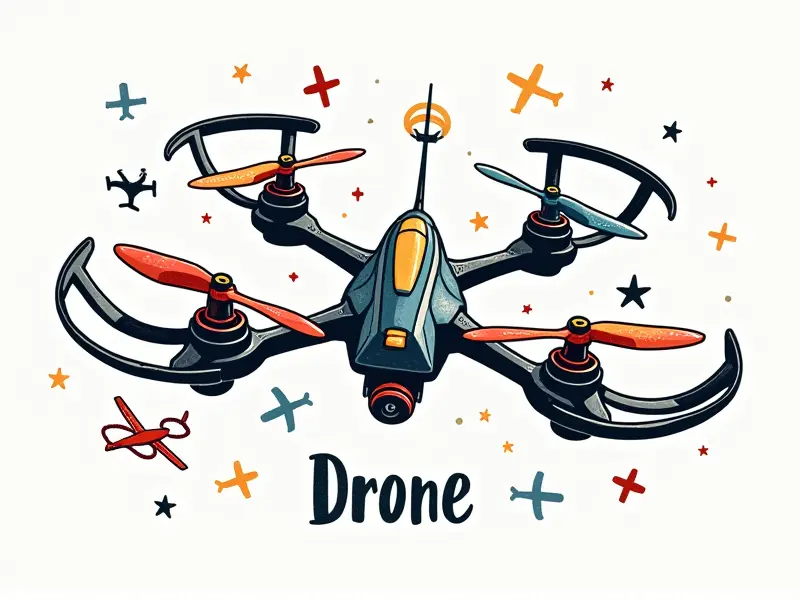How to fly an RC heli?

Mastering RC Heli Flight Basics
Flying a remote control (RC) helicopter is an exhilarating hobby that requires patience, practice, and dedication. The first step in mastering the art of flying an RC heli is understanding its basic components and controls.
- Main Rotor: This is the large rotor at the top of the helicopter that provides lift and control over pitch and roll.
- Tail Rotor: Located at the tail end, this smaller rotor counteracts torque from the main rotor to maintain yaw stability.
- Collective Pitch Control (CPC): Adjusts the angle of the blades to control lift and altitude.
- Cyclic Stick: Controls pitch and roll by changing the tilt of the main rotor disc.
- Throttle Lever: Regulates engine power, controlling both speed and lift.
Beginner's Guide to Flying RC Helis
For beginners, starting with a simulator can be incredibly helpful. Simulators allow you to practice basic maneuvers without the risk of damaging your helicopter or injuring yourself. Once comfortable with the controls in simulation, move on to real-world flights.
Step 1: Pre-Flight Check
Before taking off, ensure that all components are properly assembled and functioning:
- Battery Levels: Make sure both transmitter and helicopter batteries are fully charged.
- Propeller Blades: Inspect for any cracks or damage.
- Radio Connection: Confirm that the radio link between your controller and heli is strong.
Step 2: Takeoff Procedure
To take off, follow these steps:
- Set the throttle to idle.
- Gradually increase throttle while tilting the cyclic stick forward slightly.
- Lift off smoothly and hover at a low altitude.
Top Tips for RC Helicopter Mastery
Mastery of an RC heli comes with time and practice. Here are some tips to help you progress:
- Start Slowly: Begin with basic maneuvers like hovering, then gradually move on to more complex ones.
- Practice Regularly: Consistency is key in developing muscle memory and improving your skills.
- Analyze Mistakes: Learn from each flight by reviewing what went wrong and how it can be improved.
Learn to Fly RC Helicopters Easily
Learning to fly an RC helicopter doesn't have to be daunting. By breaking down the process into manageable steps, you'll find that mastering this skill is both fun and rewarding:
- Understand Flight Dynamics: Learn about lift, thrust, drag, and weight.
- Practice Hovering: Focus on maintaining a steady hover before attempting to move the helicopter.
- Use Checklists: Always follow pre-flight checklists to ensure your equipment is ready for action.
RC Heli Flying Techniques Explained
Mastery of RC heli flying involves understanding and applying various techniques:
- Hovers: Maintaining a steady hover is crucial. Practice this until it becomes second nature.
- Landing: Approach the landing area slowly, ensuring you have full control over your heli.
- Troubleshooting: Know how to handle common issues like battery drain or radio interference.
Step-by-Step RC Helicopter Flying Guide
This guide provides a detailed sequence of steps for flying an RC helicopter:
- Assemble the Heli: Follow manufacturer instructions to ensure everything is correctly installed.
- Charge Batteries: Ensure both transmitter and heli batteries are fully charged before flight.
- Pre-Flight Inspection: Check all components for damage or loose parts.
- Takeoff Procedure: Gradually increase throttle while tilting the cyclic stick forward slightly to lift off smoothly.
- Maintain Hover: Practice maintaining a steady hover at different altitudes.
- Landing Technique: Approach the landing area slowly, ensuring you have full control over your heli.
Essential Skills for RC Helicopter Pilots
To become proficient in flying an RC helicopter, certain skills are essential:
- Hand-Eye Coordination: Develop the ability to accurately control the helicopter based on visual cues.
- Muscle Memory: Practice regularly to build reflexes and quick response times.
- Analytical Thinking: Learn from each flight by analyzing what went well and what needs improvement.
Quick Start Guide: Flying RC Helis
This concise guide offers a fast track to getting started with flying an RC helicopter:
- Choose the Right Heli: Select an entry-level model suitable for beginners.
- Learn Basic Controls: Understand how each control affects your heli's movement.
- Practice in a Simulator: Gain confidence and familiarity with controls before real flights.
- Fly Indoors First: Start in an enclosed space to minimize risks of damage or injury.
Mastering RC Heli Basics in Minutes
While mastering the art of flying an RC heli takes time, you can learn basic principles quickly:
- Understand Lift and Thrust: Learn how these forces work together to keep your helicopter aloft.
- Maintain Hover: Practice maintaining a steady hover at different altitudes.
- Landing Techniques: Master the art of landing smoothly without damaging your heli.
Top Tricks for Newbies Flying RC Helis
Here are some tricks to help new pilots improve their skills quickly:
- Use a Simulator: Gain confidence and familiarity with controls before real flights.
- Start Indoors: Begin in an enclosed space to minimize risks of damage or injury.
- Practice Regularly: Consistency is key in developing muscle memory and improving your skills.
RC Helicopter Flight Training Made Simple
To simplify the process of learning to fly an RC helicopter, follow these straightforward steps:
- Select a Beginner Model: Choose an entry-level model suitable for beginners.
- Learn Basic Controls: Understand how each control affects your heli's movement.
- Practice in a Simulator: Gain confidence and familiarity with controls before real flights.
- Fly Indoors First: Start in an enclosed space to minimize risks of damage or injury.
By following these guides and tips, you'll be well on your way to becoming a proficient RC helicopter pilot. Happy flying!

